1. Analgesics
1.1. Aspirin
1.1.1. Do not give with other anticoagulants
1.1.2. Watch for adverse side effects
1.1.2.1. Stomach Pain
1.1.2.2. GI Bleeding
1.1.2.3. Tinnitus
1.1.2.4. Thrombocytopenia
1.1.3. Pt should stop taking several days before surgery
1.1.4. Do not give to children with a viral infection (Reye's Syndrome)
1.2. NSAIDS (Naproxen, Ibuprofen)
1.2.1. Administer with food
1.2.2. Contraindicated for people with GI ulcers
1.2.3. Watch for adverse side effects
1.2.3.1. GI distress
1.2.3.2. dizziness
1.2.3.3. occult blood
1.2.3.4. rash
1.2.3.5. heartburn
1.3. Morphine
1.3.1. Can be given:
1.3.1.1. PO
1.3.1.2. IV
1.3.1.3. IM
1.3.1.4. SC
1.3.1.5. PR
1.3.1.6. Transdermally
1.3.2. Watch for adverse side effects
1.3.2.1. respiratory depression
1.3.2.1.1. withhold under 10 resp/min
1.3.2.2. rash
1.3.2.3. bradycardia
1.3.2.4. constipation
2. Anticonvulsants/Antiseizure
2.1. Dilantin
2.1.1. Causes gum overgrowth
2.2. Tegretol
2.2.1. visual problems
2.2.2. ataxia
2.3. Luminal
2.3.1. Barbiturate
2.3.2. drowsiness
2.3.3. dependence
3. Anti-inflammatory/ Steroids
3.1. Names end in "one"
3.2. Cushing like symptoms
3.2.1. Moon face
3.2.2. Central Obesity
3.2.2.1. Weight gain in trunk
3.2.3. Skin Changes
3.2.3.1. Easily bruised
3.2.3.2. Striae
3.2.3.3. infections
3.2.4. Back ache
3.2.5. Muscle weakness
3.2.6. Bone pain
3.3. Watch for adverse effects
3.3.1. immunosuppression
3.3.2. hyperglycemia
4. Anti-coagulants
4.1. Heparin
4.1.1. Delays formation of clots
4.1.2. Monitor the aPTT
4.1.3. Antidote is protamine sulfate
4.1.4. Watch for Adverse Effects
4.1.4.1. spontaneous membrane bleeding
4.1.4.2. vasospasms
4.1.4.3. ecchymosis
4.1.4.4. hypersensitivity
4.2. Coumadin
4.2.1. Prevents clot formation
4.2.2. Monitor INR & PT
4.2.3. Antidote is Vitamin K
4.2.4. Watch for adverse effects
4.2.4.1. Overdose
4.2.4.1.1. Hemmorrhage
4.2.4.1.2. Headache
4.2.4.1.3. Bruising
4.2.4.1.4. Backpain
5. Anti-Parkinsonian
5.1. Cogentin
5.1.1. "Controls the uncontrollable"
5.1.1.1. Rigidity
5.1.1.2. Tremors
5.1.1.3. Loss of muscle movement
5.1.2. Assess Elderly
5.1.2.1. Confusion
5.1.2.2. Disorientation
5.1.2.3. Agitation
5.1.2.4. Psychotic like symptoms
5.1.3. Watch for Adverse Effects
5.1.3.1. Drowsiness
5.1.3.2. Drymouth
5.1.3.3. Blurred Vision
5.1.3.4. Urinary Retention
5.1.3.5. Constipation
5.1.3.6. Decreased Sweating
5.1.3.7. GI upset
5.2. Sinemet
5.2.1. Use when tremors aren't observed
6. Cardiovascular
6.1. Digoxin
6.1.1. Potassium levels between 0.5-2
6.1.2. BPM >60
7. Respiratory
7.1. Theophylline/Aminophylline
7.1.1. Watch for Tachycardia
7.1.2. Avoid caffeine
8. Antihypertensives
8.1. Ace Inhibitors
8.1.1. Ends in "April"
8.1.2. Decreases peripheral resistance without increasing
8.1.2.1. cardiac output
8.1.2.2. cardiac rate
8.1.2.3. cardiac contractility
8.1.3. Watch for adverse side effects
8.1.3.1. dizziness
8.1.3.2. orthostatic hypotension
8.1.3.3. headache
8.1.3.4. GI distress
8.1.3.5. nonproductive cough
8.2. Beta Blockers
8.2.1. Ends in "olol"
8.2.2. Blocks beta recptors causing a decrease in
8.2.2.1. heart rate
8.2.2.2. force of contraction
8.2.2.3. rate of A-V conduction
8.2.3. Watch for adverse side effects
8.2.3.1. bradycardia
8.2.3.2. decrease in blood pressure
8.2.3.3. lethargy
8.2.3.4. CHF
8.2.3.5. depression
8.3. Calcium Antagonists
8.3.1. "Very Nice Drugs
8.3.1.1. Veraprimil
8.3.1.2. Nifedipine
8.3.1.3. Diltiazem
8.3.2. Decreases
8.3.2.1. contractility
8.3.2.2. conductivity of heart
8.3.3. demand for oxygen
8.3.4. Watch for adverse side effects
8.3.4.1. decreased blood pressure
8.3.4.2. bradycardia
8.3.4.3. abdominal discomfort
8.3.4.4. headache
8.3.4.5. peripheral edema
9. Diuretics
9.1. Hydrochlothiazide
9.2. Lasix
9.3. Used to control edema related to
9.3.1. CHF
9.3.2. cirrhosis
9.3.3. renal disease
9.3.4. hypertension
9.4. Monitor potassium levels (0.5-2)
9.5. Watch for adverse side effects
9.5.1. Decreased
9.5.1.1. BP
9.5.1.2. NA
9.5.1.3. Chloride
9.5.1.4. Potassium
9.5.1.5. Weight
9.5.1.6. I&O
9.5.2. Hyperglycemia
9.5.3. Dehydration
10. Psychotropics
10.1. Lithium
10.1.1. Therapeutic range 0.8-1.2
10.1.2. Increase salt & fluid intake
10.1.3. Toxicity signs:
10.1.3.1. GI distress
10.1.3.2. weakness
10.1.3.3. tremors
10.2. MAOI
10.2.1. No tyramine
10.2.1.1. Cheese
10.2.1.2. Wine Pickles
10.2.2. No barbs, TCA's, antihistamines, OTC's, or antihypertensives

